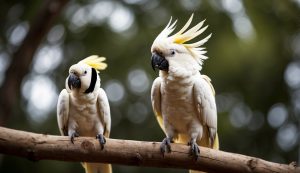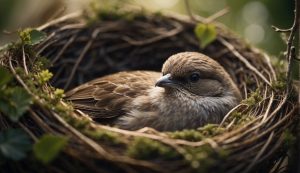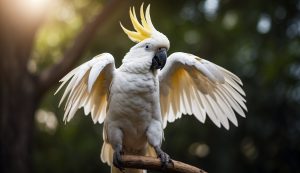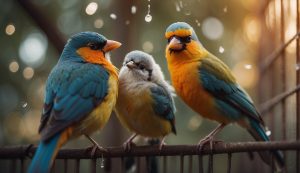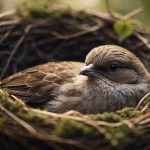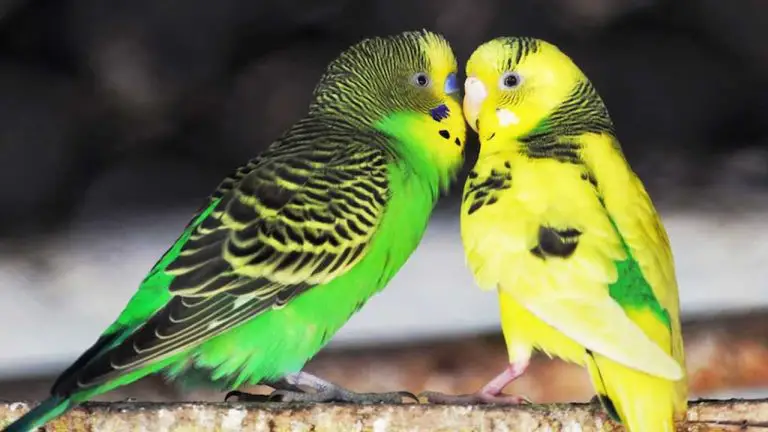How to Clean Bird Cage With Bird Inside: Quick and Safe Techniques

Maintaining a clean habitat for pet birds is crucial. I’ve found that cleaning a bird cage with the bird still inside is a delicate task. It requires patience and care to avoid causing stress to your feathery friend.

To keep their environment healthy and comfortable, I perform routine cleaning tasks. These tasks are non-disruptive and ensure the bird’s safety throughout the process.
Key Points
- Regular cleaning ensures a healthy and stress-free habitat for birds.
- Non-toxic cleaners and careful cleaning prevent health risks.
- Maintaining cleanliness supports the bird’s physical and mental health.
Table of Contents
Preparing the Cage for Cleaning
When I’m getting ready to clean my bird’s cage, the priority is ensuring the safety and comfort of my feathered friend. I also like to have my cleaning supplies handy to make the process efficient and stress-free.
Arranging Alternative Accommodation for Your Bird
First, I ensure my bird has a safe place to stay while I tackle the cleaning. I have a smaller, secondary cage that I use exclusively for this purpose. It’s important that this temporary home is also clean and comfortable to minimize stress.
- Secondary Cage: A smaller cage or a safe room.
- Familiar Toys: Including a couple of favorite toys can help my bird feel at ease.
- Food and Water: Basic necessities should be moved to the temporary accommodation.
Gathering Necessary Cleaning Supplies
I always wear gloves to protect my hands from dirt and bacteria. For cleaning, I assemble the following items:
- Gloves: To keep my hands clean and safe from germs.
- Cage Cleaner: Either a store-bought bird-safe cleaner or a homemade solution.
- Cleaning Supplies:
- Spray Bottle: Filled with either a vinegar and water solution or a bird-safe disinfectant.
- Paper Towels: For wiping down surfaces.
- Trash Bags: For disposing of used paper towels and old cage lining.
- Scrub Brush: To thoroughly clean perches and toys.
I prefer using a vinegar and water mixture in a spray bottle for a natural cleaning solution. It’s essential to ensure all products are non-toxic and safe for birds.
Daily Cleaning Routine
Maintaining a clean environment for our feathered friends is crucial for their health. I focus on daily cleaning tasks that include removing debris and droppings, refreshing their food and water, and replacing the cage liner.
Spot Cleaning Debris and Droppings
Every morning, I start by spot cleaning the cage. I carefully remove any droppings and debris from perches, toys, and the cage floor using a small brush or a vacuum cleaner designed for pet use. It’s important to do this gently to avoid startling my bird.
Cleaning up these daily messes prevents the build-up of waste and reduces the risk of diseases. If droppings become caked or are difficult to reach, I use a bird-safe disinfectant spray to help loosen them.
Refreshing Food and Water Dishes
Next, I turn my attention to the food and water dishes. Daily, I remove any uneaten food, and wash the dishes with warm, soapy water before refilling them.
I ensure that my bird has access to fresh, clean water at all times, which I usually refresh twice daily. It’s also necessary to dry the dishes thoroughly to prevent bacterial growth.
- Food bowls: Clean and replenish once or twice daily.
- Water bowls: Rinse, wash, and refill at least twice daily.
Replacing Cage Liner and Newspaper
Finally, I replace the liner at the bottom of the cage where droppings and food fall. I like to use newspaper or commercially available cage liners for this purpose.
Daily liner changes are a must to ensure that my bird isn’t exposed to waste, which can harbor harmful bacteria. Newspapers are economical and safe for birds, but I make sure that the inks used are non-toxic.
Weekly Deep Cleaning Process
Every week, I dedicate time to thoroughly cleaning my bird’s cage to ensure a hygienic environment, free from harmful bacteria build-up. Here, I’ll walk you through the steps I take for a weekly deep clean.
Removing and Cleaning Accessories
First, I remove all toys, feeding bowls, and water dishes from the cage. I soak them in a solution of warm water and mild dish soap to loosen any debris.
While they’re soaking, I use a brush to scrub all the crevices, ensuring that there’s no leftover food or droppings.
Disinfecting Cage Surfaces
Next, I prepare a disinfectant solution — a mix of one part vinegar to two parts water is non-toxic and effective. With gloves on, I wipe down all cage surfaces, including the bars and the base.
If necessary for a deeper clean or if there’s an illness issue, I might use a diluted bleach solution (1 part bleach to 9 parts water), making sure to rinse thoroughly afterward.
Scrubbing and Rinsing Perches
The perches often have droppings caked on, so I scrub them with a stiff brush under running warm water. If they’re particularly dirty, I’ll soak them in my vinegar solution before scrubbing. Sometimes, if they are wooden and tough to clean, I replace them instead.
Washing and Drying Trays
The dropping tray is next. I remove it and discard the used liner. Then, I wash the tray with hot, soapy water and a splash of vinegar to cut through the grime.
After a good scrub, I rinse it well with hot water and let it air dry completely before placing a new liner and sliding it back in.
Ensuring a Safe and Non-Toxic Environment
Maintaining a clean bird cage is critical for my feathered friend’s health. I always make certain to use products that are safe for birds to prevent exposing them to potentially toxic fumes and chemicals.
Choosing Safe Cleaning Products
When selecting cleaning products, I check for non-toxic disinfectants that are explicitly labeled safe for birds. It’s essential to ensure that the cleaning agents do not contain any ingredients that could harm my bird if inhaled or ingested.
- Safe Picks:
- Bird-safe wipes
- Enzyme-based cleaners
- Eco-friendly cleaners specifically marked as bird-safe
Avoiding Harsh Chemicals and Fumes
I strictly avoid using harsh chemicals such as ammonia, bleach, or any product with a strong odor around my bird. The delicate respiratory system of birds makes them very sensitive to fumes that might not bother me but could be perilous for them.
- Chemicals to Avoid:
- Ammonia
- Chlorine bleach
- Aerosol sprays
Natural Alternatives for Bird Safety
I often opt for natural cleaning methods like a simple vinegar solution (1 part vinegar to 2 parts water) for daily upkeep. Not only is vinegar effective at removing dirt and odors, but it’s also a non-toxic option that won’t harm my bird.
For more challenging tasks, I might use organic cleaners that provide a deeper clean without introducing harmful substances into the cage.
After-Cleaning Care and Maintenance
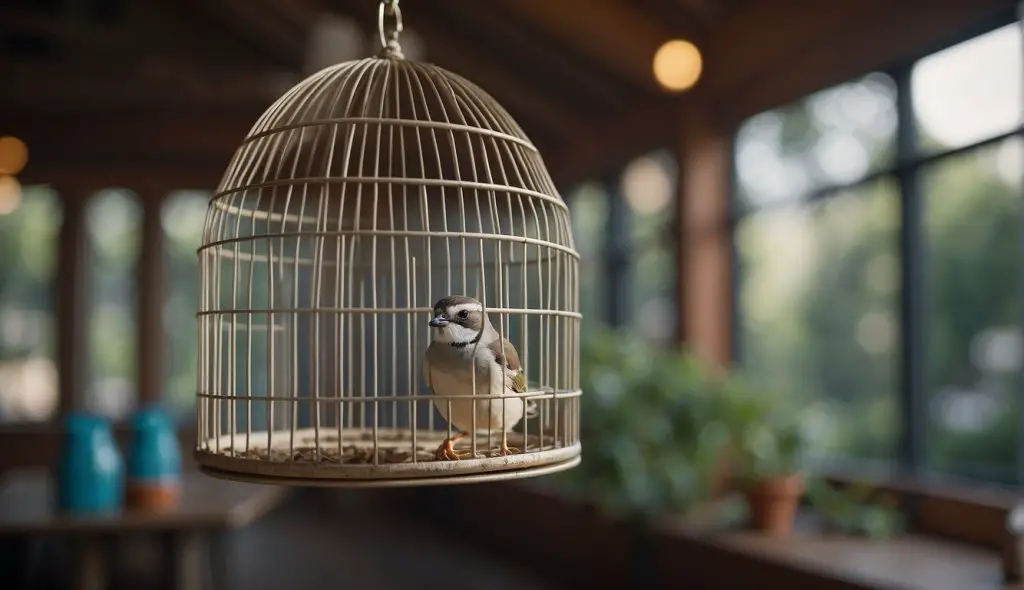
After you’ve spruced up your bird’s home, it’s important to focus on the after-care to ensure your bird remains happy and healthy. I’ll guide you through reintroducing them to their cage, maintaining a pristine environment, and setting up a cleaning schedule.
Reintroducing Your Bird to the Cage
Once I’ve finished cleaning, I make sure the cage is completely dry and free from fumes before I put my bird back inside. I then place their favorite toys and perches back in their usual spots to help them feel at ease. It’s essential to observe their behavior initially to ensure they’re comfortable and adjusting well to the refreshed space.
Maintaining a Clean and Healthy Habitat
To keep the cage in tip-top condition between deep cleanings, I stick to a weekly routine of replacing the cage liner and wiping down surfaces. Here’s a quick checklist I follow to make maintenance easier:
- Daily:
- Remove and rinse food and water dishes.
- Spot clean any messes.
- Swap out soiled liners.
- Weekly:
- Wash all removable furniture with a safe, natural cleaner.
- Wipe down cage bars and cage apron to minimize bacterial growth.
I use a mixture of water and vinegar for a natural disinfecting solution. It’s crucial to provide continuous access to clean water and fresh food to sustain a clean and healthy environment.
Scheduling for Future Cleanings
I mark my calendar for monthly cleanings as a reminder to do a more thorough wash. This involves taking everything out of the cage and disinfecting all areas. I aim to do this on a sunny day to air out any odors. Regular cleaning not only protects my bird from bacteria but also keeps my home smelling fresh.
Keeping a consistent cleaning schedule is critical to preventing the buildup of unwanted germs and ensures my bird’s home is always a sanctuary.
Frequently Asked Questions
When it comes to keeping our feathered friends happy and healthy, knowing the right way to clean their homes with them inside is crucial.
Here are the most common questions I get about cleaning bird cages.
What are safe and effective disinfectants for cleaning a bird cage?
For the safety and health of your bird, I recommend using pet-safe disinfectants available in pet stores. They’re designed to be non-toxic and effective against germs. Always rinse the cage thoroughly with water after using any disinfectant to prevent any residual fumes or substances.
Can I use vinegar to clean a bird cage while the bird is inside, and how?
Yes, vinegar is a safe, natural cleaner that I often use. Simply dilute it with water (half vinegar, half water) in a spray bottle. Mist lightly and wipe down the cage surfaces. Ensure the cage is well-ventilated and dry before allowing your bird back in.
What is the best way to cover and protect my bird when cleaning the cage?
I find that gently draping a light cloth over the part of the cage where my bird is perched works well. It helps them feel secure while I clean the other sections. Remember to never cover the entire cage as it restricts airflow and can cause distress.
How often should I thoroughly clean my bird’s cage?
To keep my bird’s environment healthy, I do spot cleaning daily and a deep clean weekly. This routine helps prevent the buildup of droppings and food waste which can harbor bacteria and parasites.
What are some easy-to-make homemade cleaners for bird cages?
A simple homemade cleaner I use is a mix of lemon juice, baking soda, and water. It’s effective for scrubbing and deodorizing. Make sure to rinse well with water after cleaning to ensure no residues remain.
If a bird passes away, how should the bird cage be cleaned?
In this unfortunate event, cleaning the cage is particularly important.
I remove all contents and wash the cage with a disinfectant cleaner.
All items such as dishes and toys should also be cleaned or replaced.
Once dry, the cage can be reused or stored away.

